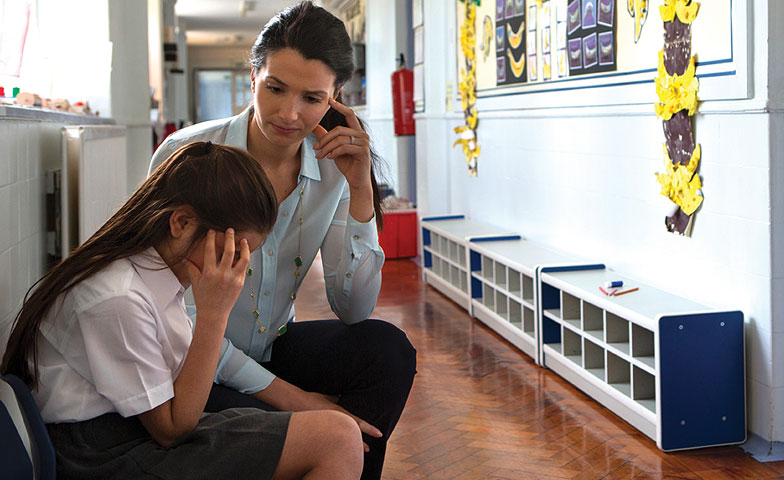Watching for even the small details can create a responsive culture that meets the social, emotional, and academic needs of students
I bet you didn’t know that you signed up to be a triage nurse now did you? Meeting the social, emotional, and academic needs of middle school students is a lot like working the triage desk in a busy hospital. The process of assessing the patient, gathering data, and making a plan of action is actually quite similar to what teachers do to handle the multitude of dilemmas in our classroom each day. Let me explain.
Assess the Student
Meet your students at the door. Shake hands, high five, make a joke, make eye contact, or simply smile. Sadly, you could be the only adult who takes an interest in a child. Obviously we are looking for signs of abuse, bruises, tears, disheveled clothes, or a child who is hungry, or is recovering from a tragedy or suffering from Post-Traumatic Stress Disorder. These are our emergencies. We must take immediate action to help these students. Be familiar with your school’s protocols for these types of problems, but also find out the network of educators, healthcare workers, guidance counselors, and others who will help you work with the child’s problems. For many of us, it is an occasion to have a problem like this, but for some teachers, these aren’t uncommon situations.
However, we shouldn’t only be looking for the big problems, as they are most often easy to spot. Rather, we should be looking at the small details. Is a child constantly yawning? Does the child look sad or depressed? Does the child usually flash a smile, but that day look down or away? We need to act on behalf of these students too, but it might be a much more nuanced approach. Ask the child in casual conversation about what is going on. A boy today was standing at my desk, asking questions, but suppressing yawn after yawn. I jokingly said, “You need more sleep! You are making me yawn.” He went on to tell me—freely, without more prodding—that his cousin is staying with them for a while, and they were up playing video games all night. This is the moment when we can let the child know we care, and we can also make suggestions.
Gather Data
Just as a nurse takes a patient’s temperature, comparing the temperature to what it is typically, we must take note of data that indicates there might be a problem with a student. If a student never misses homework, but suddenly doesn’t do it, there is something going on. If a child is always polite but has become sullen, look into it. Keep notes in your gradebook of discrepancies and surprising grades. These types of observations may come in handy later at a CSE meeting, a disciplinary situation, or a parent meeting. Letting students know that you notice is important too. If a student is suddenly late to class, even though she’s been on time all year, I always ask if there is anything I can do to help her get to class on time. More times than you think the problem is something you can assist with; for example, helping a child learn a better route to your class, perhaps one that doesn’t take the long way around, can show that you care, and that you are going to hold the child accountable.
Make a Plan
When the triage nurse assesses the patient, she or he must decide if the patient needs immediate attention, can wait, or doesn’t need to be seen at all. When a student’s problem is minor, we need to help the child address it. I frequently meet with students to help them organize their lockers, notebooks, backpacks, etc. They simply become overwhelmed—we’ve all been there. Sure, this type of help isn’t always rewarding, as many disorganized kiddos become very flustered when they are required to “get their act together” as I call it, but this type of early action can prevent later problems.
It is important that we treat these small instances on a daily basis, ultimately acting as a triage station. If we can help the child come up with a plan (like take your lunch box with you to the class prior to lunch), we can prevent a small issue like tardiness from turning into an emergency later.
Acting as a triage station by assessing our students, gathering data to add validity to our hunches, and helping the student and other adults make a plan for the student’s success is a radical departure from how education has handled the students before us. Too often, the only attention given to students is in the form of emergency care—waiting until a child had failed a class, watching a student continue to lose weight, or comforting a crying child over a divorce. Those are obviously important, but we must remember that even if a child’s problem seems small, we must help him or her to figure out the solution.
Every day is an adventure in middle school, and most of us knew that before we started. However, I’d like to encourage you to look at it as a triage station as well. When we can prioritize what needs to be handled immediately and what can be dealt with later, we are helping create a responsive culture where the social, emotional, and academic needs of the child are taken into account.
